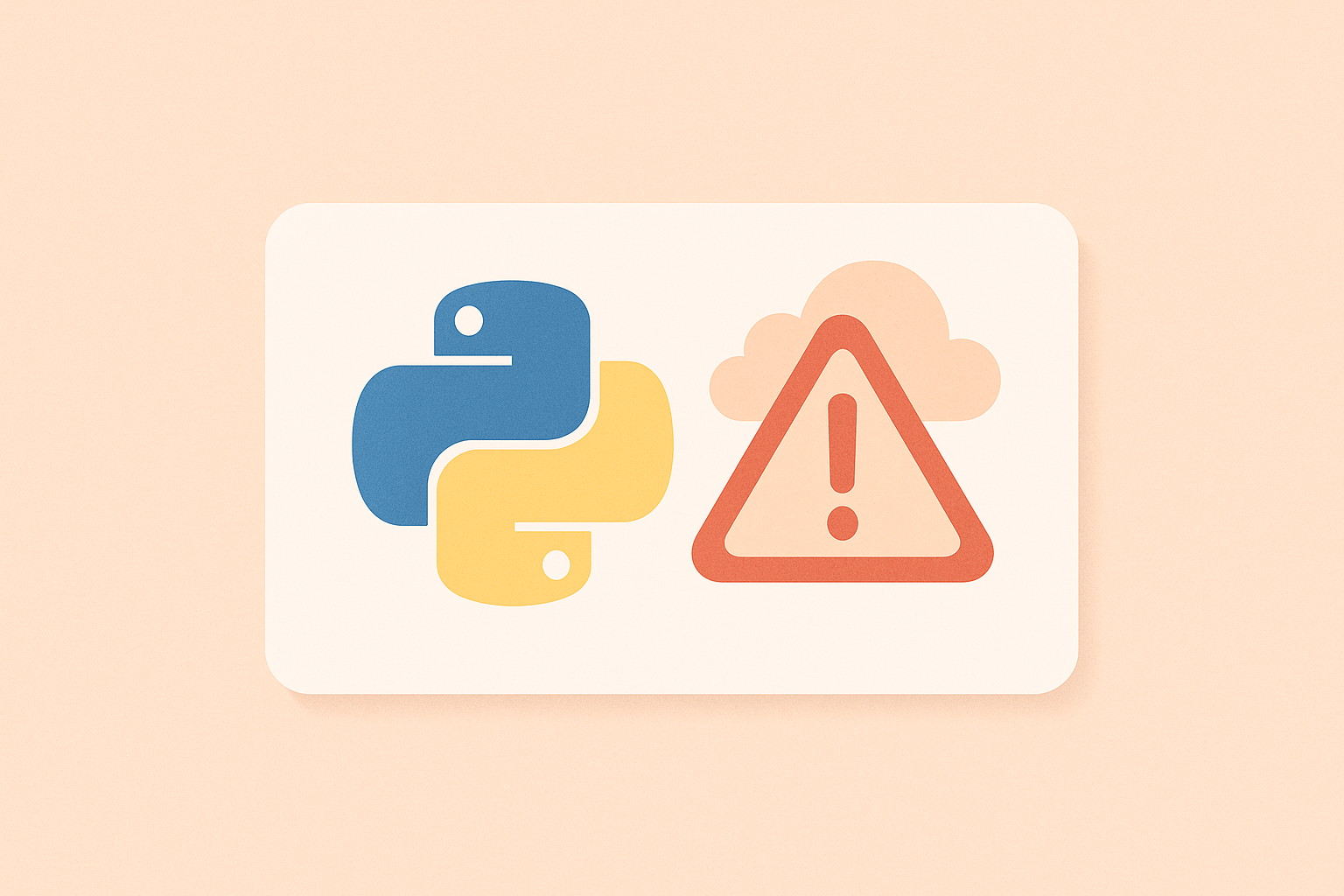When developing a Python application, exception handling plays a vital role in ensuring your code runs smoothly and errors are properly managed. Python provides several built-in exceptions like ValueError, TypeError, and KeyError. However, in many cases, you’ll need to create your own custom exceptions to handle specific error situations in your project. In this article, you’ll learn everything about Python Custom Exceptions — from why they’re useful to how to implement them effectively with real-world examples.

What Are Custom Exceptions in Python?
A custom exception is a user-defined error type that inherits from Python’s built-in Exception class (or one of its subclasses). Creating custom exceptions helps make your code more readable, maintainable, and specific in identifying what kind of problem has occurred.
For example, if you are building a banking application, you might want to define your own exception like InsufficientBalanceError or InvalidTransactionError instead of just raising a general ValueError.
Why Use Custom Exceptions?
Here are some reasons why custom exceptions are useful:
- Improved readability: The exception name clearly describes what went wrong.
- Better control: You can catch specific exceptions rather than generic ones.
- Maintainability: Large projects benefit from well-organized error types.
- Custom logic: You can attach extra data or methods to your custom exception.
Creating a Simple Custom Exception
Let’s start with a simple example to define a custom exception class using Python’s class keyword:
# Example 1: Creating a simple custom exception
class InvalidAgeError(Exception):
"""Raised when the input age is invalid"""
pass
def check_age(age):
if age < 0:
raise InvalidAgeError("Age cannot be negative.")
elif age < 18:
raise InvalidAgeError("You must be at least 18 years old.")
else:
print("Age is valid.")
try:
user_age = int(input("Enter your age: "))
check_age(user_age)
except InvalidAgeError as e:
print("Error:", e)
Explanation:
- We created a new class
InvalidAgeErrorthat inherits fromException. - Inside the function
check_age(), we useraiseto trigger this custom exception. - The
try-exceptblock handles the custom error gracefully and prints a meaningful message.
Custom Exceptions with Additional Attributes
Sometimes you may want your exception to store extra data, such as error codes or context details. You can achieve this by adding an __init__ method.
# Example 2: Custom exception with attributes
class TransactionError(Exception):
def __init__(self, message, balance, amount):
super().__init__(message)
self.balance = balance
self.amount = amount
def withdraw(balance, amount):
if amount > balance:
raise TransactionError("Insufficient funds!", balance, amount)
balance -= amount
return balance
try:
current_balance = 5000
withdrawal = 7000
new_balance = withdraw(current_balance, withdrawal)
print("New Balance:", new_balance)
except TransactionError as e:
print(f"Transaction failed: {e}")
print(f"Balance: {e.balance}, Withdrawal Attempt: {e.amount}")
Explanation:
The TransactionError class stores the current balance and the amount attempted to withdraw, allowing for detailed debugging and custom handling in large applications.
Chaining Exceptions with “from”
Python allows you to chain exceptions using the from keyword, making debugging easier by showing the original cause of an error. Here’s how:
# Example 3: Chaining exceptions
class DatabaseConnectionError(Exception):
"""Raised when database connection fails"""
pass
def connect_to_database():
try:
raise ConnectionError("Unable to reach the server.")
except ConnectionError as e:
raise DatabaseConnectionError("Failed to connect to the database.") from e
try:
connect_to_database()
except DatabaseConnectionError as e:
print("Error:", e)
By chaining exceptions, the traceback will show both the DatabaseConnectionError and the original ConnectionError, providing more insight during debugging.
Creating a Hierarchy of Custom Exceptions
In complex systems, it’s best practice to create an exception hierarchy. You can define a base exception class and then subclass it for different types of errors.
# Example 4: Exception hierarchy
class AppError(Exception):
"""Base class for all application errors"""
pass
class NetworkError(AppError):
"""Network-related errors"""
pass
class AuthenticationError(AppError):
"""Authentication failure errors"""
pass
def login(username, password):
if username != "admin":
raise AuthenticationError("Invalid username.")
elif password != "12345":
raise AuthenticationError("Incorrect password.")
else:
print("Login successful!")
try:
login("user", "wrongpass")
except AuthenticationError as e:
print("Authentication failed:", e)
except NetworkError as e:
print("Network issue:", e)
Using a hierarchy helps when you want to catch all application-level errors using a single except AppError: statement, while still maintaining control over specific error types.
Best Practices for Custom Exceptions
- Always inherit from
Exceptionor one of its subclasses. - Use descriptive class names like
InvalidInputErrororDatabaseTimeoutError. - Document your exceptions using docstrings.
- Use exception hierarchy for modular design in large projects.
- Include additional attributes only when necessary for debugging or context.
Conclusion
Custom exceptions in Python are a powerful way to make your code more descriptive, modular, and easier to debug. By defining your own exception types, you can handle errors specific to your application’s logic and provide meaningful messages to developers and users alike. Whether you’re building a small script or a large-scale application, mastering custom exception handling will significantly improve your Python coding skills.
Now that you understand how to create and use Python Custom Exceptions, try integrating them into your own projects. Well-structured error handling is a hallmark of professional and maintainable code.

